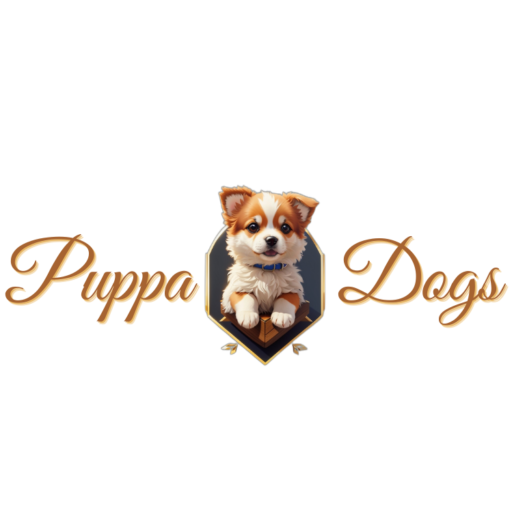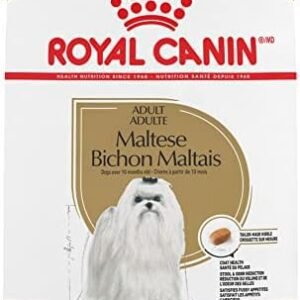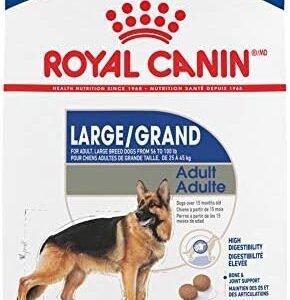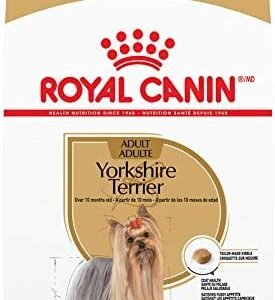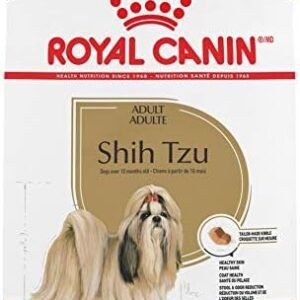Introduction
Can dogs eat pork? This seemingly simple query has perplexed pet owners for ages. We all know our canine companions have an insatiable love for food, but the line between what’s safe and what isn’t can often be blurred. In this comprehensive exploration, we embark on a journey into the intricate world of canine dietary habits, specifically focusing on the consumption of pork. Understanding the nuances of a dog’s diet is not just a matter of curiosity; it’s a vital aspect of responsible pet ownership. Our furry friends’ well-being hinges on the food we provide, making it imperative to unravel the facts, dispel the myths, and comprehend the potential health implications associated with dogs indulging in pork.
Table of Contents
Raw vs. Cooked Pork
The preparation method is the linchpin when it comes to feeding dogs pork. Raw pork, unfortunately, can serve as a breeding ground for harmful bacteria like Salmonella or Trichinella. Ingesting these pathogens can lead to a barrage of health issues in dogs, ranging from gastrointestinal distress to severe infections. However, all is not lost in the world of canine culinary delights. Cooking pork thoroughly obliterates these risks, rendering it safe for our pets to consume. The transformation that occurs in the cooking process is not merely a matter of taste; it’s a matter of safety and well-being for our beloved companions.

Pork Bones: A Big No-No
While the aroma of a succulent pork bone might make any dog’s tail wag, the reality is starkly different. Cooked bones, including those from pork, possess a treacherous secret. They splinter. These seemingly harmless splinters can turn into deadly shards, posing a choking hazard and potentially causing severe internal injuries. As responsible pet owners, it’s our duty to protect our furry friends from this peril. Hence, the golden rule stands firm: avoid giving dogs any kind of bones, especially pork bones, to ensure their safety and happiness.
Health Implications: Pros and Cons
Nutritional Benefits of Pork
Now, let’s delve into the positive side of the porky tale. Pork, when prepared and administered with caution, can be a nutritional boon for our canine companions. It’s a commendable source of protein, the cornerstone of muscle growth and repair. Moreover, it boasts essential amino acids, which are the unsung heroes in a dog’s overall well-being. When included in their diet in moderation and cooked to perfection, pork can become a valuable addition, offering a plethora of necessary nutrients essential for optimal health.
Potential Risks and Allergies
Yet, in our quest to nourish our pets, there are hidden hurdles to overcome. Some dogs, just like humans, might harbor allergies to certain foods, pork included. These allergies can manifest in various ways, from digestive issues like upset stomachs to skin problems and even respiratory distress. Recognizing these signs and being vigilant about your pet’s well-being is vital. Monitoring your dog for any adverse reactions after introducing pork can help you identify allergies promptly, ensuring their continued health and happiness.
In conclusion, the question remains: can dogs eat pork? Yes, they can, but the devil lies in the details. Cooking pork thoroughly and avoiding bones are not just culinary tips; they are life-saving measures for your cherished canine companion. Additionally, understanding the uniqueness of your pet is key. Every dog is an individual, and what works wonders for one might not be suitable for another. By comprehending your dog’s specific needs and being attuned to their reactions, you can navigate the culinary world for them, ensuring not just a full belly, but a healthy and happy life. So, let’s embark on this enlightening journey together, exploring the realms of canine culinary choices and making informed decisions that will shape the lives of our furry friends.
The tantalizing aroma of sizzling pork wafts through our kitchens, tempting not only our taste buds but also those of our four-legged companions. But can dogs indulge in this culinary delight without consequences? The answer is yes, but with several caveats.
Pork: Not Toxic, But with Caution
Pork itself is not inherently toxic to dogs. In fact, many dogs relish the taste of this meaty delight. When considering its nutritional value, pork offers a variety of essential nutrients that can benefit our canine friends. Let’s break down the nutritional content of pork:
| Nutrient | Amount per 100 g of cooked, ground pork |
|---|---|
| Calories | 297 kcal |
| Protein | 25.7 g |
| Fat | 20.8 g |
| Carbs | 0 g |
| Fiber | 0 g |
| Sugar | 0 g |
| Water | 53% |
| Thiamine | 0.6 mg (50% DV) |
| Niacin | 6.9 mg (43% DV) |
| Riboflavin | 0.3 mg (23% DV) |
| Vitamin B6 | 0.4 mg (24% DV) |
| Phosphorus | 212 mg (17% DV) |
| Selenium | 35.1 mcg (64% DV) |
| Zinc | 2.9 mg (26% DV) |
| Potassium | 318 mg (7% DV) |
Pork is rich in proteins, aiding in muscle growth and repair, making it a valuable addition to a dog’s diet. Additionally, it contains essential amino acids, contributing significantly to a dog’s overall well-being. However, as with any good thing, there are drawbacks to consider.
The Drawbacks: Potential Risks and Considerations
While pork boasts these nutritional benefits, there are potential risks associated with its consumption by dogs. One significant concern is the high-fat content in certain cuts of pork. Excessive fat intake can lead to pancreatitis, a painful and potentially life-threatening condition in dogs. Therefore, it’s crucial to opt for lean cuts and remove any visible fat before offering pork to your pet.
Another concern is the presence of seasoning or spices in some pork preparations. Onions, garlic, and certain spices are toxic to dogs and can cause adverse reactions. Always ensure that the pork you provide is unseasoned and free from additives that might harm your canine companion.
Additionally, pork should never replace a dog’s primary diet. While it can be a tasty and nutritious treat, a well-balanced dog food tailored to meet all nutritional requirements should remain the foundation of your pet’s diet.
How Much Pork Can a Dog Eat?
So, now that we’ve established that dogs can indeed enjoy pork, albeit with caution, the next natural question is: How much is too much? Like any indulgence, moderation is the key to a happy and healthy canine companion.

Moderation Is Key
When it comes to incorporating pork into your dog’s diet, the golden rule is moderation. While pork can be a tasty addition, it should not constitute more than a certain percentage of your dog’s daily calorie intake. Treats, including pork, should only make up a small portion of your dog’s overall diet. A dog’s primary food source should always be a nutritionally balanced dog food, specifically designed to meet their dietary needs.
Start Small and Observe
Before you let your furry friend indulge in a pork feast, start with a small piece. Observe how your dog reacts to this new addition to their diet. Like humans, dogs can have varying tolerances to different foods. Some may take to pork with gusto, while others might have a more delicate digestion. By starting small, you can gauge your dog’s reaction and ensure that their stomach is comfortable with the new addition.
Proper Preparation Is Key
How you prepare the pork is as crucial as the quantity you offer. Always serve unseasoned, plain, and cooked pork to your dog. Avoid using any seasoning, spices, or sauces as these can upset your pet’s stomach or, in some cases, even be toxic. Opt for lean cuts, removing any visible fat. Baked, boiled, or grilled pork without any added flavors or oils is the way to go. Your dog’s digestive system will thank you for your culinary diligence.
Consider Your Dog’s Size and Breed
The size and breed of your dog play a significant role in determining how much pork they can tolerate. Larger dogs, with their robust constitutions, can generally handle more significant portions compared to smaller breeds. It’s essential to consider your dog’s individual needs and adjust the serving size accordingly.
Appropriate Serving Sizes Based on Weight
As a general guideline, consider the following approximate serving sizes of pork based on your dog’s weight:
- Small Breeds (up to 20 lbs / 9 kg): 1 to 2 small bites (about the size of a pea) as an occasional treat.
- Medium Breeds (20-50 lbs / 9-23 kg): 2 to 4 small bites as an occasional treat.
- Large Breeds (50-90+ lbs / 23-41+ kg): 4 to 6 small bites as an occasional treat.
Remember, these are rough estimates, and your dog’s individual metabolism and health condition should also be taken into account. Regular monitoring of your dog’s weight and overall health, along with consultation with your veterinarian, can provide tailored guidance on the appropriate serving sizes for your specific furry friend.
In essence, while pork can indeed be a delightful treat for your dog, responsible pet ownership involves mindful indulgence. By exercising prudence in portions and preparation, you can ensure that your beloved pet enjoys the occasional porky delight without compromising their health. As always, understanding your dog’s unique needs and preferences is the key to making informed decisions about their diet, ensuring they live a life filled with health, happiness, and the occasional tasty treat.
What Are the Risks of Feeding Pork to Dogs?
While we’ve explored the potential benefits of incorporating pork into your dog’s diet, it’s equally crucial to understand the risks associated with this choice. Every delightful treat comes with its share of potential hazards, and pork is no exception, especially when it comes to our canine companions.
Food Allergies: A Common Concern
One of the primary risks associated with feeding pork to dogs revolves around the possibility of food allergies. Dogs, just like humans, can be allergic to specific proteins or components present in pork. When an allergic reaction occurs, it can manifest in various ways, with gastrointestinal distress being a common short-term sign. Vomiting, diarrhea, or general discomfort after consuming pork can be indicative of a food intolerance or allergy. It’s vital to monitor your dog closely, especially after introducing a new food item like pork.
Hazardous Components in Pork
Beyond allergies, certain components in pork can pose additional risks to dogs. For instance, processed pork products like sausages or bacon often contain high levels of salt and unhealthy preservatives, which are harmful to canine health. Excessive salt intake can lead to sodium ion poisoning, causing symptoms like vomiting, diarrhea, seizures, and, in severe cases, even death. Therefore, it’s crucial to avoid feeding your dog seasoned or processed pork products.
Potential Issues: A Word of Caution
Additionally, certain parts of the pork, like fatty cuts, can trigger pancreatitis in dogs due to their high-fat content. Pancreatitis is a painful inflammation of the pancreas, leading to symptoms such as loss of appetite, vomiting, abdominal pain, and lethargy. Hence, it’s imperative to remove any visible fat before offering pork to your pet.
Another concern is pork’s potential to transmit diseases like trichinosis, a parasitic infection caused by Trichinella spiralis. While the chances of dogs contracting this disease from cooked pork are relatively low, it highlights the importance of thorough cooking to eliminate any potential risks.
Signs and Symptoms: How to Identify Adverse Reactions
Being vigilant about your dog’s health is essential, especially after introducing new foods. Watch out for signs of allergic reactions, which may include:
- Gastrointestinal Distress: Vomiting, diarrhea, or constipation.
- Skin Problems: Itching, redness, rashes, or hives.
- Respiratory Distress: Wheezing, coughing, or sneezing.
- Behavioral Changes: Lethargy, restlessness, or hyperactivity.
- Digestive Discomfort: Stomach bloating, discomfort, or gassiness.
If you notice any of these symptoms after your dog consumes pork, it’s crucial to consult your veterinarian immediately. Allergic reactions can escalate rapidly, and prompt medical attention is vital to ensure your pet’s well-being.
In conclusion, while pork can be a delectable addition to your dog’s diet, it’s essential to approach it with caution. Being aware of potential risks, monitoring your dog closely, and seeking veterinary advice if you suspect any adverse reactions are vital steps in ensuring your furry friend enjoys their culinary adventures without compromising their health. By staying informed and attentive, you can strike a balance between treating your dog and safeguarding their well-being, allowing them to savor the delights of pork responsibly.
How to Feed Pork to Your Dog and Make It More Enjoyable for Them
Now that we’ve established the do’s and don’ts of feeding pork to dogs, let’s explore the delightful side of this culinary adventure: making it a truly enjoyable experience for your furry friend. Dogs, much like humans, appreciate variety in their meals. Here are some creative and enjoyable ways to incorporate pork into your dog’s diet, transforming their meals into moments of gastronomic delight.
Fresh or Frozen Treats
One of the simplest ways to introduce pork to your dog is by offering it as a fresh or frozen treat. Freeze small portions of cooked, unseasoned pork for a refreshing, chilly snack on a hot day. These icy delights can not only provide a burst of flavor but also serve as a soothing treat, especially for teething puppies. Just ensure the pieces are appropriately sized for your dog’s breed and size.
Food Topper or Mixer
Pork can serve as an excellent food topper or mixer for your dog’s regular meals. Adding small, cooked pork pieces on top of their kibble can entice even the pickiest eaters. The aroma and taste of pork can enhance the overall appeal of their meal, encouraging them to finish their food with gusto. Mixing pork into their regular meals can also provide a change in texture, making mealtime a more exciting experience.
Homemade Treats and Snacks
Get creative in the kitchen and whip up some homemade treats or snacks using pork as the star ingredient. You can make pork jerky by thinly slicing cooked pork and dehydrating it for a chewy, flavorful snack. Alternatively, create meatballs or patties by mixing ground pork with dog-friendly vegetables like carrots or sweet potatoes. Bake these concoctions into bite-sized treats for a tasty and nutritious reward during training sessions.
Enhancing Your Dog’s Meals
Beyond treats, pork can be used to enhance your dog’s daily meals. Create a hearty and nutritious meal by preparing a homemade dog food recipe that incorporates pork, vegetables, and grains. Slow-cooked stewswith pork, brown rice, and vegetables can provide a balanced and flavorsome meal that your dog will eagerly anticipate. Just ensure that all ingredients are dog-friendly and avoid adding any seasonings, spices, or sauces.
Exploring Creative Culinary Adventures
For the culinary enthusiasts, consider exploring creative culinary adventures for your canine companion. You can prepare pork-based broths or stocks, which can be poured over their regular kibble to add moisture and flavor. Another idea is to create frozen popsicles by blending cooked pork with dog-safe fruits like apples or bananas, then freezing the mixture in molds for a refreshing summer treat.
Sharing Recipes and Ideas
To inspire your fellow pet parents, consider sharing your favorite pork recipes and ideas in online pet communities or forums. Whether it’s a simple pork treat recipe or an elaborate homemade meal idea, your insights can spark creativity among others looking to enrich their dog’s diet. Sharing knowledge not only fosters a sense of community but also contributes to the well-being of dogs everywhere.
10 FAQs About Dogs Eating Pork: Unraveling the Canine Pork Conundrum
As pet owners, we strive to provide the best for our beloved dogs, and this includes ensuring their diet is not only nutritious but also safe and enjoyable. With the debate around dogs consuming pork, several questions arise. Let’s unravel the mystery with these ten frequently asked questions about dogs eating pork.
1. Can Dogs Safely Eat Pork Bones?
No, dogs should never be given pork bones, whether raw or cooked. Cooked bones, including pork bones, can splinter and cause choking hazards or internal injuries, posing significant dangers to your pet.
2. Can Dogs Eat Pork Fat?
While dogs need some fat in their diet, excessive fat, especially from fatty cuts of pork, can lead to pancreatitis. It’s advisable to trim off visible fat before offering pork to your dog to prevent potential health issues.
3. Is Pork Safe for Dogs with Allergies?
Dogs can indeed be allergic to pork, just like humans can be allergic to certain foods. If you notice any signs of allergies, such as itching, gastrointestinal distress, or respiratory problems, it’s best to avoid pork and consult your veterinarian.
4. Can Dogs Eat Pork Raw?
Feeding dogs raw pork is highly discouraged. Raw pork can harbor harmful bacteria such as Salmonella or Trichinella, which can lead to severe health problems in dogs. Cooking pork thoroughly is crucial to eliminate these risks.
5. Can Pork Treats Be Used for Training?
Yes, pork treats can be excellent training rewards. Opt for small, lean, and cooked pork pieces as training treats. Their aroma and taste can motivate your dog during training sessions, making the learning process more enjoyable for both of you.
6. Is Pork a Complete Protein for Dogs?
Pork is a good source of protein, but it shouldn’t be the sole protein source for your dog. Dogs need a variety of protein sources for a balanced diet. While pork provides essential amino acids, it’s essential to complement it with other proteins like chicken, beef, or fish.
7. Can Puppies Eat Pork?
Puppies can eat pork, but it should be introduced gradually and in small amounts. Always ensure the pork is well-cooked, lean, and free from seasonings or additives. Monitor your puppy for any adverse reactions and consult your veterinarian if you have concerns.
8. Is Pork Liver Safe for Dogs?
Pork liver can be fed to dogs in moderation. It’s a nutrient-dense organ meat that provides essential vitamins and minerals. However, like other pork products, it should be cooked thoroughly to eliminate any potential pathogens.
9. Can Pork Cause Upset Stomach in Dogs?
Yes, pork can cause an upset stomach in dogs, especially if it’s fatty or seasoned. Some dogs have sensitive stomachs and may not tolerate certain foods well. If your dog experiences gastrointestinal distress after consuming pork, it’s best to avoid it in the future.
10. Can Dogs Eat Pork Sausages or Bacon?
No, dogs should not be given pork sausages or bacon. These processed pork products are high in salt and unhealthy preservatives, which can be harmful to canine health. Excessive salt intake can lead to sodium ion poisoning, causing severe symptoms such as vomiting, diarrhea, seizures, and, in severe cases, death.
Conclusion: Balancing Treats for a Healthy, Happy Pup
In conclusion, understanding the nuances of feeding pork to your canine companion is essential for their well-being. While dogs can enjoy pork in small amounts as an occasional treat, it’s crucial to acknowledge the potential risks and exercise caution. Excessive or improper consumption of pork can lead to various health issues, making moderation key when introducing it into your dog’s diet. Remember, pork is not an essential componentof your dog’s nutrition and should be offered sparingly.
If you’re seeking alternative treats for your furry friend, consider options that are both safe and healthy. Fruits like blueberries, apples, and bananas are excellent choices. Not only are these treats lower in sugar and acidity than pork, but they also offer a myriad of nutritional benefits. Just ensure to remove any seeds or cores before offering them to your dog, providing a tasty and wholesome snack option.
We’re here to help you navigate the world of pet nutrition. Do you have any questions or concerns about your dog’s diet? Share your thoughts in the comment section below. Your experiences and inquiries are invaluable, contributing to a community of pet lovers dedicated to providing the best for our four-legged friends. Let’s keep our dogs happy, healthy, and delighted with their treats!

Dr. Rachel Davis is a passionate veterinarian, having completed her studies in veterinary medicine at the University of California. Alongside her professional commitments, she remains dedicated to her beloved dog and has a profound love for all animals. In her spare time, she indulges in her passion for writing, often focusing on topics related to veterinary care and animal welfare.
















